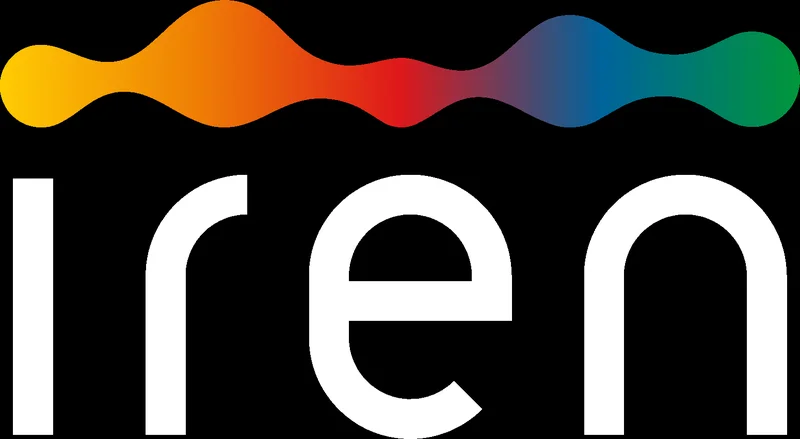The stock chart for Iris Energy (NASDAQ: IREN) looks less like a financial instrument and more like a rocket launch trajectory. A year ago, this was a sub-$10 stock. As of this week, it’s flirting with $60, having clocked a gain of roughly 500%—to be more exact, the 52-week run is in the 460% to 550% range depending on your precise measurement window, but the point remains unchanged. This is a vertical move.
The simple explanation is that Iris is a Bitcoin miner, and with Bitcoin screaming past $120,000, all boats in the crypto harbor are rising. But that’s a lazy, incomplete analysis. Peers like Riot Platforms and Cipher Mining aren’t seeing anything close to this ascent. The market isn’t valuing Iris Energy as a simple miner anymore. It’s pricing in a radical transformation, a pivot so aggressive it has Wall Street analysts either quadrupling their price targets to $82 or slashing them to $24.
This isn’t a story about a stock. It’s a story about a valuation caught between two massively powerful, and potentially conflicting, narratives. Investors are trying to decide if they’re buying a highly efficient digital gold miner or the next major player in AI infrastructure. The data suggests it’s both, and that duality is precisely where the opportunity—and the immense risk—lies.
Deconstructing the Two Engines
To understand the frenzy around IREN, you have to look at it as a company with two distinct engines. The first is a finely tuned, cash-gushing machine. The second is a speculative, high-torque engine being bolted onto the chassis while the vehicle is already moving at speed.
The first engine is its Bitcoin mining operation. And I’ve analyzed dozens of miners; securing power contracts under four cents per kilowatt-hour is the holy grail. It’s the single greatest determinant of survival. Iris has done it, with an average power cost of just ~$0.038/kWh, sourced entirely from renewables. With Bitcoin at $124,000, their breakeven cost to mint a single coin is somewhere around $35,000. This translates into gross margins of 70-75%. It’s a money printer, plain and simple. This operation is what provides the company with a formidable balance sheet and the cash flow to fund its ambitions.
The second, more speculative engine is the one driving the stock’s re-rating: the pivot to an AI cloud provider. Iris just spent $674 million to purchase another 12,400 high-end GPUs from Nvidia and AMD, doubling its fleet to around 23,000 units. The stated goal is to generate over $500 million in annualized AI-cloud revenue by early 2026. This is where the narrative makes a leap of faith. The AI cloud segment generated just $16 million in revenue in fiscal 2025. The company is projecting a 3,000% increase in that business line’s run-rate in about 18 months.
This is like a highly profitable commercial fishing company using its cash to build a fleet of experimental submersibles for deep-sea exploration. The core business is solid, funding the entire venture. But the new valuation is suddenly tethered to the unproven, high-risk, high-reward project. Are they building the future of underwater research, or are they just sinking hundreds of millions to the bottom of the ocean? The key question the filings don't fully answer is how much of that projected $500 million in revenue is already under contract versus being merely an optimistic target. That single detail makes all the difference.

A Discrepancy in the Data
When a company’s story is this compelling, I immediately look for discrepancies in the data, particularly in how the so-called “smart money” is behaving. With Iris, the signals are fascinatingly mixed.
On one hand, you have major institutional conviction. Fidelity’s FMR Co. didn't just dip a toe in the water; they cannonballed in, acquiring a stake of 8.65 million shares in a single quarter. That’s a nine-figure bet from one of the most respected asset managers on the planet. Analysts at firms like Roth/MKM and Bernstein are racing to upgrade their targets, with one calling the stock a “Picasso at a garage sale,” implying it’s still deeply undervalued even after its run. This Crypto and AI Stock Just Got a Massive New Street-High Price Target That Implies Shares Could Double in the Next Year.
But then you look at other data points. JPMorgan issued a rare downgrade to Underweight with a $24 price target, arguing that the stock’s price “might already account for future growth expectations.” This is the core of the bear case: the price has front-run reality. Perfection is already priced in. Then there’s the insider activity. The company’s co-CEO brothers sold about one million shares each in September when the stock was in the mid-$30s (a pre-planned sale, to be fair). It’s logical for founders to diversify, but selling a significant stake just before the stock nearly doubles invites questions. Why cash out for $66 million if you’re certain it’s on a trajectory to be worth multiples of that?
This is the central tension. The valuation, at over 60 times forward earnings, is no longer tethered to the proven Bitcoin engine. It’s fully priced for the speculative AI engine to fire on all cylinders without a single misfire. The stock is trading today on revenue that might exist in 2026. Can management actually deploy 23,000 GPUs, build out the data centers, and win enterprise clients away from the likes of Amazon and Google? The Nvidia "Preferred Partner" status helps, but it doesn't close deals. Inside a massive data center, the hum of thousands of servers and cooling fans is a constant reminder of the immense operational challenge and capital expenditure required to make this vision a reality.
The Price of a Pivot
The current stock price of Iris Energy is not a reflection of what the company is today—an exceptionally profitable, low-cost Bitcoin miner. It is, instead, a high-premium call option on what it might become tomorrow: a significant player in specialized AI cloud compute.
The strategy itself is astute. The Bitcoin operation acts as a massive, non-dilutive funding mechanism that de-risks the capital-intensive AI buildout. Most AI startups would need to raise mountains of venture capital; Iris can self-fund from its mining profits.
However, the market has skipped the execution phase and jumped straight to the victory lap. The stock’s valuation has priced in a flawless transition 12 to 18 months before the results can possibly be proven. An investor buying IREN today isn't purchasing a business based on its current fundamentals. They are buying a very expensive ticket to a show that hasn't started yet, hoping the performance lives up to the hype on the poster. The risk/reward calculus seems skewed until the company can demonstrate that the AI revenue is not just a projection, but a recurring, high-margin reality.



